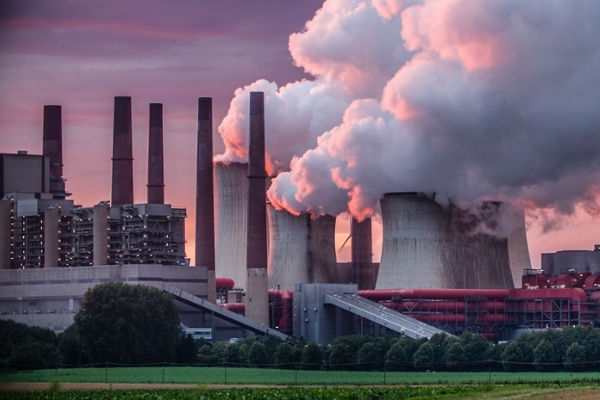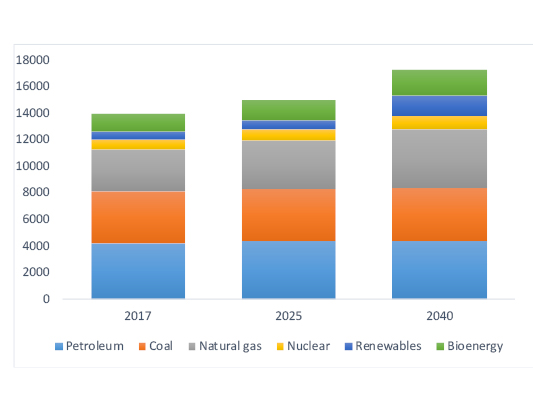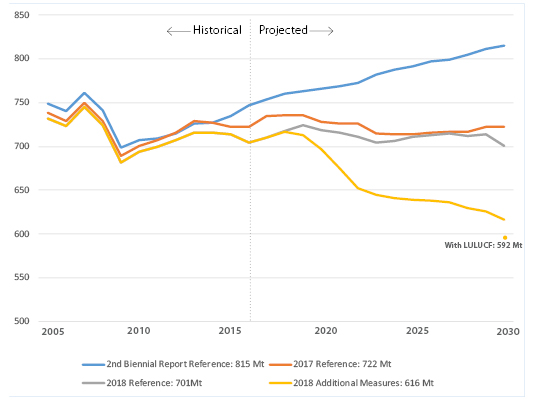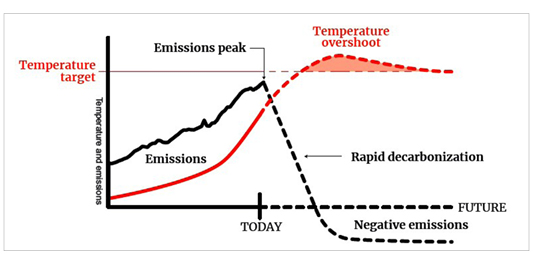
Climate Change and the Policies of Deception
One thing is certain. The climate is going to change in Canada in the coming weeks and months when it comes to the climate change issue. It will get hotter. You can count on the debate, such as it is, intensifying as the nation heads towards an October election. And so it should, especially when the world faces an existential threat that is now officially deemed an “urgent climate crisis” by a motion of the House of Commons. For the purposes of the electorate passing judgment on the preferred policy to address climate change, the partisan battle lines are now well drawn.
By Dale Eisler, Senior Policy Fellow, Johnson Shoyama Graduate School of Public PolicyOne thing is certain. The climate is going to change in Canada in the coming weeks and months when it comes to the climate change issue. It will get hotter. You can count on the debate, such as it is, intensifying as the nation heads towards an October election. And so it should, especially when the world faces an existential threat that is now officially deemed an “urgent climate crisis” by a motion of the House of Commons. For the purposes of the electorate passing judgment on the preferred policy to address climate change, the partisan battle lines are now well drawn.
For the governing Liberals it’s the Pan-Canadian Framework on Climate Change (PCFCC). The government maintains that the PCFCC sets out a course for Canada to meet its greenhouse gas emission reduction targets established in the 2015 Paris Agreement, which seeks to limit the global temperature increase to less than 2 degrees centigrade, ideally 1.5 degrees. Canada’s objective is a 30 per cent reduction in emissions from 2005 levels by 2030. Centrepiece of the strategy, at least in terms of public attention, is a price on carbon. The policy calls for a price of $20 a tonne that became effective January 1 this year. If provinces didn’t have an equal or higher price in place by April 1, then the federal “backstop” applies and the levy is imposed. The price is scheduled to rise to $50 a tonne by 2022. But the Pan-Canadian Framework is far broader than merely a carbon price. Coupled with it are assorted other measures, and related legislation such as Bill C-69, which sets out a new regulatory framework that will govern resource development such as pipelines. But the dominant factor framing the debate is the carbon price.
The policy alternatives, at least in terms of emphasis, from other political actors vary significantly. The Opposition Conservatives have put forward a plan with three themes: Green technology, instead of taxes; a “cleaner and greener” natural environment; and, taking the climate change fight global. The primary message is that Canada can meet its Paris objective through technology and regulation, without imposing taxes or direct costs on Canadians.
The NDP plan promises jobs, an end to fossil fuel subsidies, cheaper, and in some cases free, public transit, and “affordable zero-emission vehicles”. The Green party calls its plan “Mission: Possible”. It proposes to double the reduction in GHG emissions to 60 per cent from 30 per cent by 2030. Among its policy prescriptions are an East-West electricity grid, the complete energy retrofit of every building in Canada, and an end to imported foreign oil. Then there is the People’s Party of Canada, which will leave it up to the “free market” to sort things out. Underlying each of the policy prescriptions is the relative urgency the proponents apply to the issue.
What’s left to people’s imaginations are the actual specifics and consequences of how any of this will be achieved. As former Prime Minister Kim Campbell famously and disastrously said during the 1992 federal election campaign, which ended with her then Progressive Conservative Party losing 154 seats: “an election was no time to discuss serious issues.” Based on the state of the climate change policy debate today, that sounds about right.
A policy effort that began in 1992
If people have serious doubts about real progress being made in reducing GHG emissions, they come by their skepticism honestly. The debate goes back decades. It formally began in 1992 at the Rio Earth Summit. In 1995, the Conference of the Parties (COP) agreed to binding targets and timetables. That led to the Kyoto Protocol in 1997, which included “flexible” and “market-based” mechanisms. Then came the 2007 Bali Action Plan, which led to the Copenhagen Accord, followed by the Cancun Agreements which were designed to formalize emission reduction measures. Then there was COP 17 in Durban, which led to the Paris Agreement of 2015, which includes the top-down Kyoto approach with the bottom-up tactics set out in Copenhagen and Cancun.1
The result of these herculean global efforts for the last three decades? GHG emissions have continued to grow relentlessly, in some cases at an alarming rate. Is it any wonder then, that even James Hansen, the former NASA scientist often considered the father of climate change awareness, has turned into a cynic? “It’s a fraud really. A fake. It’s just worthless words. There is no action. Just promises,” said Hansen of the Paris Agreement.2
The gap between rhetoric and reality in the climate change debate is nothing new. In fact, it’s at the heart of the policy dilemma. The challenge has been and continues to be implementing policy that bridges the two. What it requires is an honest public dialogue, one that recognizes the scope of the challenge and what it will take to achieve the goals that governments have set. Many believe we are doing neither because the political consequences of honesty are too dire to contemplate. To reduce emissions in any significant way requires a significant change in behaviour at the individual level and a retooling of our economy away from its dependence on fossil fuels. The scope of that challenge is huge. Fundamentally it means accepting a lower standard of living, which most policymakers would prefer not to mention.
The problem is after 25 years of trying, it is still virtually impossible to think of the issue in realistic and attainable global policy terms. A single nation like Canada, which represents about 1.5 per cent of the world’s GHG emissions, appears nowhere close to a policy consensus on the way forward. Is it reasonable to believe there can be global coordination of objectives and policy among more than 190 nations?
The skepticism is well-placed and unavoidable. It is also realistic. Vaclav Smil of the University of Manitoba is one of the world’s foremost voices articulating the scale of the challenge. He notes that even if the Paris Agreement targets are achieved by 2030, global emissions will still rise by 50 per cent above 2017 levels.
Smil maintains that throughout history transitions from one major energy source to another are long, arduous and take generations. Complicating the problem today is that time is not on our side. We have about a decade to get the world’s act together in terms of climate change policy, or all will be lost. Moreover, Smil points out that historically, humans have traded weak energy sources for ones that deliver more energy. What’s being proposed today is the opposite. To move away from fossil fuels, which have high energy density, to more dispersed renewable sources, such as solar and wind farms, means society is going down, rather than up, the power density ladder.
What that inevitably entails will be significant economic adjustment, lifestyle changes, higher energy costs and, yes, lower living standards, particularly as they relate to transportation. For a northern-climate nation like Canada, with a dispersed population strung narrowly across a continent wide geography, those are not the kind of subjects to create public support, which is why they are never a central part of the climate change policy discussion. Instead, a brave new world that is weaned off fossil fuel conjures up pleasant images of green, renewable energy sources where the sun always shines, the wind always blows and gas stations have been replaced by battery-charging stations.
But tell that to the International Energy Agency. It projects that the energy mix will not change quickly. In 2017, fossil fuels accounted for approximately 85 per cent of global primary energy.3 As the graph below shows, the IEA does not see a massive shift in energy sources by 2040, even though it has one of the most optimistic scenarios for electric vehicles.
Figure 1: IEA projections only show modest renewable increase by 2040, Global primary energy use, Mtoe

One other way to put the issue in context is to consider Canada’s record of reducing emissions. Based on the Government of Canada’s own assessment, we’re nowhere near meeting our target. In its annual analysis, Environment and Climate Change Canada (ECCC) admits as much. Based on current policies and measures that have been announced, with some not yet fully implemented, ECCC says emissions will fall from 704mt in 2016 to 616mt in 2030, or more than 100mt short of the 2030 target of 513mt. Those figures include the carbon tax of $20 a tonne, rising to $50 a tonne by 2022.4
Figure 2: Historical greenhouse gas emissions and projections, Canada, 2005 to 2030 (Megatonnes of carbon dioxide equivalent)

Recently, the Parliamentary Budget Office (PBO) released its own assessment of the impact of Canada’s carbon price. It found that we would need an additional carbon price of $6 a tonne in 2023, on top of the $50 a tonne currently proposed, and then another additional $52 a tonne by 2030. No sooner did the PBO release its projections, then the federal government announced it would not increase the carbon price above the $50 a tonne planned for 2022. The higher price, which by the way assumes that the revenue would be returned to individuals, would also would have a negative effect on the economy. The PBO forecast GDP 0.35 per cent lower in 2030 than what’s forecast under current policies.5
As Smil notes, what makes the challenge to meet the Paris target so stark is the fact that, while emissions will decline in affluent countries, including China, the rise of emissions is accelerating in India and Africa. “There is obvious discord between the constant promises of rapid and deep decarbonization effected by a variety of new techniques and the realities of global energy consumption,” says Smil. “Between 1992 and 2017 all major indicators associated with the demand for fossil carbon increased substantially, and as result CO2 emissions rose by about 60 per cent in 25 years. 2018 set another emission record and many realities point to further increases ... the world cannot expect any sudden, miraculous and rapid reversal of CO2 emissions, no instant bending of the curve so fancifully depicted in the latest IPCC report.”6
While the policy debate tends to focus on emissions from the oil and gas and transportation sectors, those form only one part of a much bigger challenge. Says Smil: “Demand for the four material pillars of modern civilization (steel, cement, ammonia and plastics) remains strong and we do not have any non-carbon alternatives to produce these materials that could be deployed rapidly and affordably at the requisite scales.”7
Figure 3: Steep, rapid decline in emissions required

The bottom line is no one should expect any rapid shift resulting in a reversal of emissions. Why would the hundreds of millions of people who live in energy poverty give up access to fossil fuels—which have been the underpinning of growth and prosperity for the developed world—to move down the so-called energy ladder? As the World Bank states: “Access to energy is essential to reduce poverty. Globally, 840 million people still live without electricity and three billion people use polluting fuels to cook, undermining their health, development prospects and quality of life.”8 The World Bank notes that energy is crucial to development. It states: “Energy is at the heart of development. Without energy, communities live in darkness, essential services such as clinics and schools suffer, and businesses operate under crippling constraints. Energy makes possible the investments, innovations and new industries that are the engines of jobs and growth for entire economies.”
In Canada, serious climate policy progress is hobbled by two key factors. One is public opinion. According to recent polls, nearly two-thirds of Canadians see fighting climate change as a top priority. But a majority are not willing to pay more than $100 a year, or $9 a month, to combat it. The greatest support is among younger Canadians, with 38 per cent agreeing that “our survival depends on it.”9 The other factor is lifestyle expectations. To adequately reduce emissions in any meaningful way will require fundamental changes in behaviour that lead to a lower standard of living than what people expect and enjoy today. The rapid transition over the next decade to the low carbon economy required to adequately reduce emissions means the lifestyles of today cannot go on. There will be massive disruption in the energy and transportation sectors that today are critical to the Canadian economy.
Unfortunately, the sacrifices required by Canadians are, for the most part, not heard in the policy debate. The result is the menu of policy options now on offer to Canadians fails to properly set out what it will take to meet our nation’s objective as part of the Paris Agreement. As for the Paris Agreement itself, it is seen by many as insufficient to meet its goal of limiting a rise in temperature to two degrees. One MIT study forecasts that even if all of the Paris targets are reached, the two-degree goal will be exceeded by one degree by the end of the century.10
What it will take
It is evident that if people are serious about tackling the enormity of the climate change issue, much more needs to be done than what is being proposed. A significantly higher price on carbon than is currently being projected, one that directly and significantly affects consumer and corporate behaviour is a basic necessity. But a price on carbon is only one part of the solution to a complex problem. For example, in a 2018 study the OECD focused on financing a climate change agenda well beyond a carbon price. It included low-emission infrastructure planning, greater incentives for technology innovation, aligning fiscal and budget incentives of government with climate change objectives and the attraction of new investors and sources of finance through the use of concessional finance strategically to advance national climate change agendas.11 Moreover, it is impossible to imagine a low-carbon, low-GHG-emission economy that can meet society’s needs without nuclear power, which has greater energy density than any other fuel source, playing a major role. But nuclear still faces significant public resistance.
The first step towards the needed agenda is a more honest public policy discussion about the truth and consequences of what it’s going to take to seriously tackle the issue. The facts show that Canada will not achieve its goal without significant economic disruption, far more than is being suggested in the current debate. As Vaclav Smil has argued, the transition from one type of energy economy to another is a long, drawn-out process. It will be even more so when the objective is to transition from high energy density carbon-based fuel, to low density dispersed options such a wind and solar, especially if nuclear is not a significant part of the mix. Inevitably it means impacts on standards of living.
Which brings us back to the dilemma that has given Canada such a superficial and unrealistic policy debate about climate change. Actually it’s not surprising. That’s because at its core, public policy is the art of persuasion. Canadians have consistently shown low tolerance of any significant negative lifestyle impacts or personal costs in the context of dealing with climate change. As The Economist magazine recently noted: “Carbon taxes, though much touted by economists, have never been popular with voters.”12 The result has been half measures and platitudes that suggest it’s possible to transform an economy and society built largely on carbon-based energy with a minimum of disruption to the standards of living and lifestyles we currently enjoy.
It’s a conversation that doesn’t happen because, if it did, everyone knows where it will lead. So instead we’re left with policies of incrementalism and false hope, when what’s required is farreaching action, and a willingness to discuss uncomfortable truths.
References
1 History of UN Climate Talks, Center for Climate and Energy Solutions
2 The Guardian, Dec. 12, 2015
3 p. 3, Mountains and Molehills, Achievements and Distractions on the Road to Decarbonization, JP Morgan, March 2019
4 Progress towards Canada’s greenhouse gas emission reduction target, January 2019, ECCC
5 https://www.pbo-dpb.gc.ca/en/blog/news/closing-gap-carbonpricing-paris-target
6 Realities vs. miraculously bending curves, Vaclav Smil paper, March 21, 2019
7 ibid
8 https://www.worldbank.org/en/topic/energy/overview
9 https://www.cbc.ca/news/politics/election-poll-climatechange-1.5178514
10 2018 Food, Water and Climate Outlook, MIT
11 https://www.oecd.org/environment/cc/climate-futures/policyhighlights-financing-climate-futures.pdf
12 P. 22, The Great Divide, The Economist, June 29-July 5, 2019
ISSN 2369-0224 (Print) ISSN 2369-0232 (Online)
Dale Eisler

Prior to joining the JSGS, Dale Eisler spent 16 years with the Government of Canada in a series of senior positions, including as Assistant Deputy Minister Natural Resources Canada; Consul General for Canada in Denver, Colorado; Assistant Secretary to Cabinet at the Privy Council Office in Ottawa; and, Assistant Deputy Minister with the Department of Finance. In 2013, he received the Government of Canada’s Joan Atkinson Award for Public Service Excellence. Prior to joining the federal government, Dale spent 25 years as a journalist. He holds a degree in political science from the University of Saskatchewan, Regina Campus and an MA in political studies from Vermont College. He also studied as a Southam Fellow at the University of Toronto, and is the author of three books.

